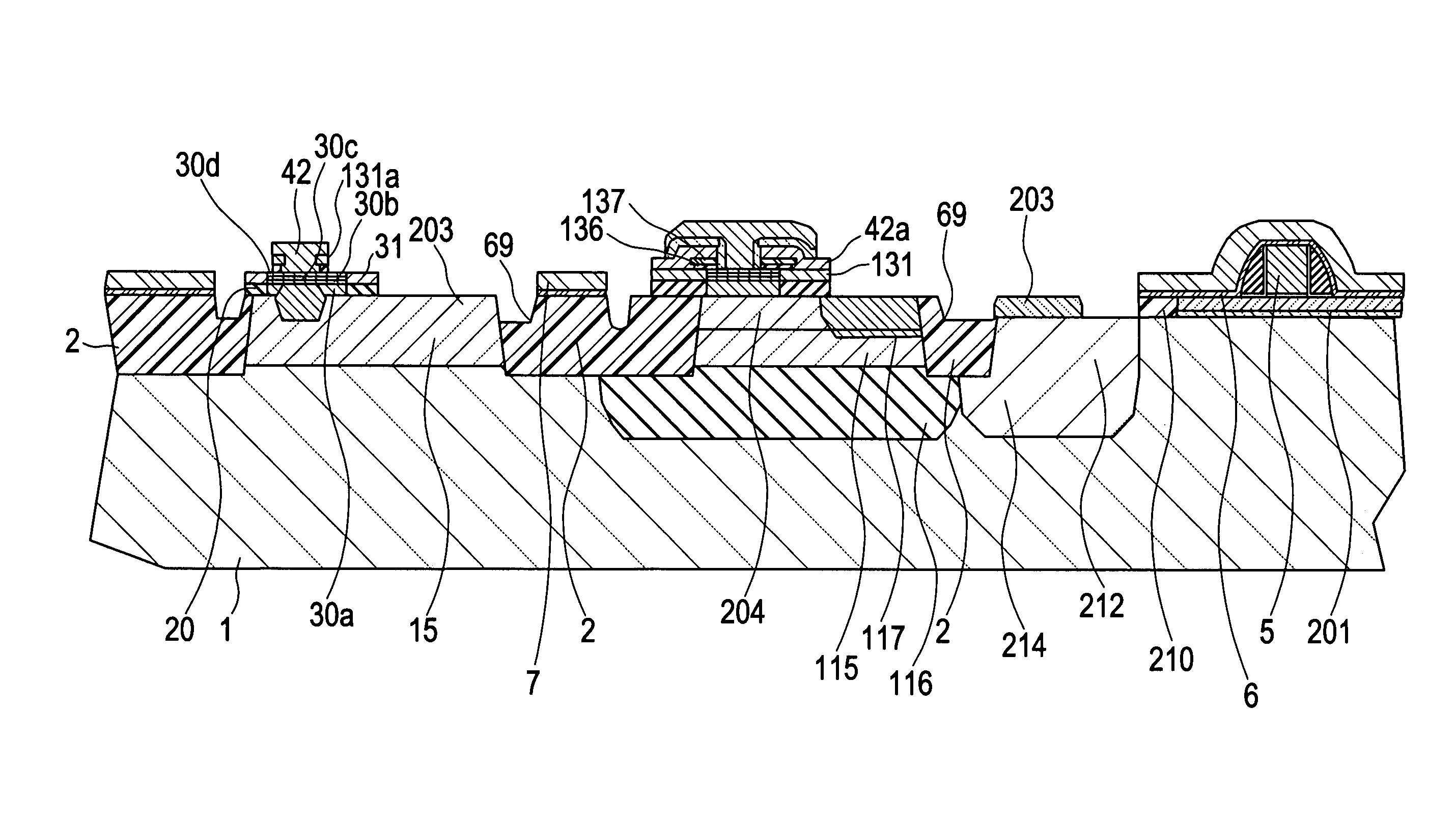Bipolar complementary semiconductor device
a complementary semiconductor and bipolar technology, applied in the direction of semiconductors, semiconductor devices, electrical devices, etc., can solve the problems of reducing the operation efficiency of pnp, reducing the efficiency of cmos, etc., to achieve the effect of reducing resistance, high frequency properties and simple production
- Summary
- Abstract
- Description
- Claims
- Application Information
AI Technical Summary
Benefits of technology
Problems solved by technology
Method used
Image
Examples
example 1
[0100]An embodiment of the semiconductor device according to the invention which includes complementary bipolar transistors with an epitaxial base is now described with reference to FIG. 1. In this example an npn-bipolar transistor A and a pnp-bipolar transistor B are produced on a high-ohmic monocrystalline p−-conductive Si substrate 1. The arrangement described here is not restricted to p−-conductive Si substrates. The essential features can also be transferred to substrates of the opposite conductivity type. At the same time CMOS transistors can also be present on the substrate 1, but are not shown in FIG. 1.
[0101]The npn-bipolar transistor A with an epitaxial base includes an n-conducting collector 11 and an also n-conducting emitter 40. The collector is passed for contact laterally by way of the collector contact region 12 and a collector connection doping 14.
[0102]In the vertical direction between the emitter 4 and the collector 11 is a monocrystalline layer stack 30 which is ...
example 2
[0127]Reference will now be made to FIGS. 2 through 8 to describe a process for the production of the semiconductor device according to the invention comprising complementary bipolar transistors with an epitaxial base. In addition in the example set forth here MOS transistors are also produced on one and the same substrate wafer besides complementary bipolar transistors.
[0128]FIG. 2 shows a snapshot during a first masking step for the production of complementary bipolar transistors. The basis for production is formed by a substrate 1 (FIG. 2) which preferably includes a monocrystalline p−-conducting (low p-conducting doping) silicon which is as high-ohmic as possible. The processing procedure for the substrate 1 begins with the production of the field insulation regions 2. In the present embodiment so-called shallow trenches are used as the field insulation regions. Selected regions have been doped by implantation in the further course of the production process. On those regions, re...
example 3
[0159]The procedure set forth in Example 2 is modified in such a way that, prior to the deposit of the layer stack 6, 7, no gate spacers are produced at the MOS gates. Production of gate spacers can be effected on the one hand with the removal of the layer 7 at the end of the bipolar module. In that respect it is not a wet etching process but a dry etching step that is required, unlike Example 2. On the other hand, as described in Example 2, a layer can be deposited after the bipolar module, which is used by means of a dry etching step for the gate spacer production operation. As set forth in Example 2 defined regions can be protected prior to that etching operation if a lacquer mask is structured beforehand.
PUM
 Login to View More
Login to View More Abstract
Description
Claims
Application Information
 Login to View More
Login to View More - R&D
- Intellectual Property
- Life Sciences
- Materials
- Tech Scout
- Unparalleled Data Quality
- Higher Quality Content
- 60% Fewer Hallucinations
Browse by: Latest US Patents, China's latest patents, Technical Efficacy Thesaurus, Application Domain, Technology Topic, Popular Technical Reports.
© 2025 PatSnap. All rights reserved.Legal|Privacy policy|Modern Slavery Act Transparency Statement|Sitemap|About US| Contact US: help@patsnap.com



